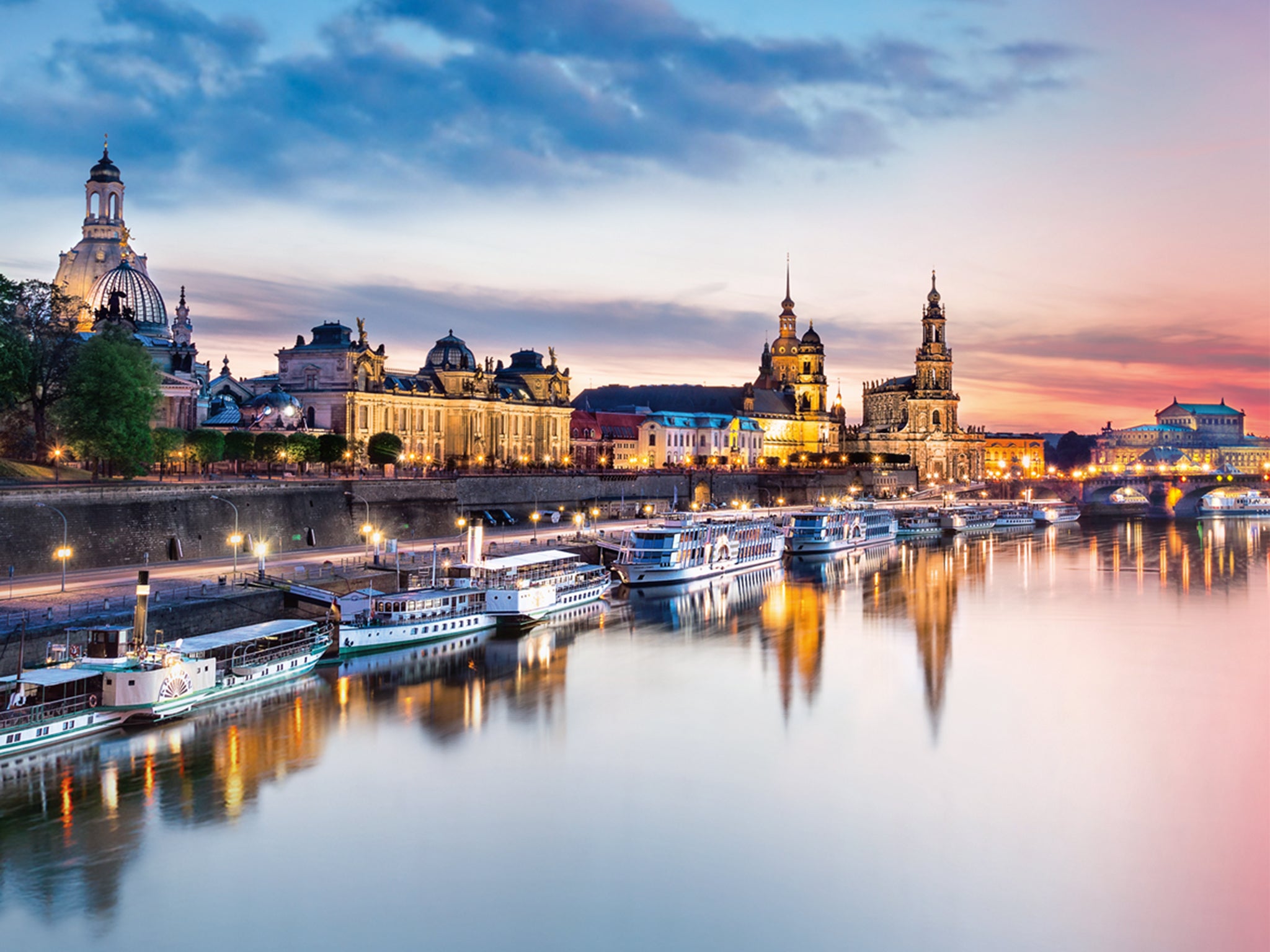Dresden: A beauty that rose from the wreckage
Seventy years after Allied bombers reduced it to charred rubble, this ‘Florence on the Elbe’ is glorious again

Iam midway down the thin alley of Kleine Brüdergasse when the Busmannkapelle puts in an appearance. A phantom amid the feast of Baroque architecture that makes up most of Dresden’s central Altstadt (Old Town), this modern chapel (00 49 351 202 2258; busmannkapelle.de) is under construction, its pale simplicity mildly out of sync with the grandiosity around it. It also tells a sorrowful story, designed as a memorial to the Sophienkirche – a pretty 13th-century church which was destroyed in the Second World War firebombing of Dresden, and, unlike several surrounding structures, never rebuilt.
It is 70 years this weekend since the infamous Allied air attacks that turned one of Europe’s cultural landmarks – the capital of Saxony, often referred to as the “Florence of the Elbe” – into a blackened ruin, and killed around 25,000 of its inhabitants.
And yet, seven decades on, eastern Germany’s most beautiful dot on the map is not a city that dwells on the past. At least, not the wartime version of it. Wander its heart and you’ll find many of the most elaborate buildings dreamed up during its halcyon 18th and 19th centuries have been recreated to reflect their former glory. The Semperoper, on Theaterplatz (00 49 351 320 7360; semperoper-erleben.de), entirely resembles the opera house which opened on the square in 1841, though this fresh incarnation was completed in 1985. Alongside, the Zwinger – one of the palaces crafted for Friedrich Augustus I, Saxony’s flamboyant 18th-century ruler – could be the 1728 original, not a 1963 copy.
Of course, visitors can listen to the echoes of 1945 that resound in other parts of Dresden – not least its churches (see Don’t Miss). But this is also a city of scope and style whose charms play out in three distinct areas – the Altstadt, on the south bank of the Elbe, plus the Neustadt (New Town) on the north side, and its cool neighbour, the Aussere Neustadt (Outer New Town).
Dresden bombing: Then and now
Show all 9Dresden suffered badly in the 20th century, but is a bright image of resurgence in the 21st.
Unpack
The Steigenberger Hotel de Saxe (00 49 351 43 860; de.steigenberger.com) is a fragment of the revitalised Dresden – staring at its neighbour, Frauenkirche church (see Don’t Miss), across the once rubble-strewn Neumarkt square.
Here, 185 rooms and suites offer inner-city sophistication. Doubles from €101 (£75), room only.
Think local
Dresden’s story is perhaps best told by those who call it home. Dresden Walks (00 49 351 259 9886; dresdenwalks.com) proffers tours on foot led by local residents. Its “Old Town” jaunt (€12/£9) departs from Schlossplatz every day at noon and dissects the city of Friedrich Augustus I, along with the grim events of 1945 and their aftermath. A separate walk which explores the rather lighter-hearted Aussere Neustadt can be arranged as a private tour for the same price, but for a minimum of five people.
Drink
Aussere Neustadt is Dresden’s nightlife heartland – especially on the buzzy strip of Alaunstrasse. Bar 84, at No 66 (00 49 173 412 7787; bar84.de), revels in potent cocktails like the Monza (vodka, cassis, grapefruit; €4.50/£3.30). Nearby, at 43 Louisenstrasse, the Louisen Garten (00 49 160 796 5137; biergarten-dresden.de) is a traditional German beer garden which serves up beers from €2.50 (£1.85) and chunky bratwurst for much the same.
Eat
Alaunstrasse also stretches to culinary flair – partly in the shape of Lila Sosse (00 49 351 803 6723; lilasosse.de), a local favourite where braised beef cheeks come with mashed potato for €13.50 (£10).
Elsewhere in the Aussere Neustadt, Planwirtschaft (00 49 351 801 3187; planwirt schaft.de), at 20 Louisenstrasse, peers back fondly at the Iron Curtain era, with old radios and antique typewriters littering a room where you suspect the walls are listening. The menu includes breaded pork cutlets for €9.80 (£7.25).
Spend
The Neustadt is an intriguing shopping enclave – thanks, not least, to the vast Neustädter Markthalle (00 49 351 810 5445; markthalle-dresden.de.) Open daily except Sunday, this covered market on Metzer Strasse dates back to 1899. Seriously damaged in 1945, it has returned to life as a pocket of stalls selling everything from flowers to toys.
As enticing is the Aussere Neustadt’s Kunsthofpassage (kunsthofpassage.de), an arcade with entrances at Görlitzer Strasse 21-25 and Alaunstrasse 70, full of boutiques. These include Ultramaringelb (00 49 351 802 5445; ultramaringelb.de), with its quirky jewellery.
Getting there
Cityjet (0871 405 2020; cityjet.com) offers the sole direct flight between the UK and Dresden – five times every week from London City. The easiest alternative is to fly to Berlin’s Schönefeld airport – served from a range of UK cities – and continue by rail. The train takes under three hours, with fares from €19 (£15) if booked in advance at bahn.de
More information
Subscribe to Independent Premium to bookmark this article
Want to bookmark your favourite articles and stories to read or reference later? Start your Independent Premium subscription today.

Join our commenting forum
Join thought-provoking conversations, follow other Independent readers and see their replies